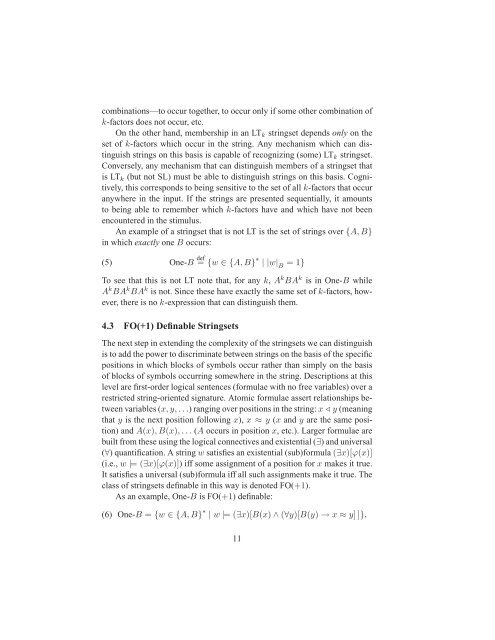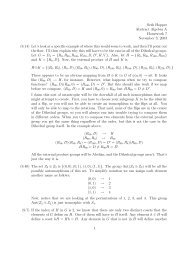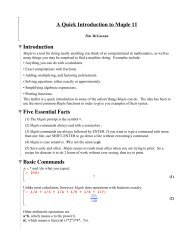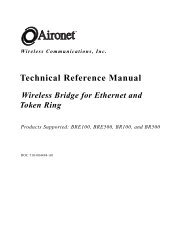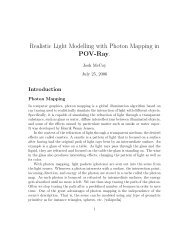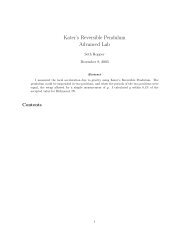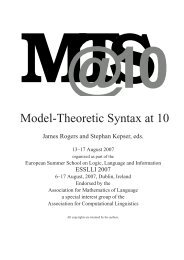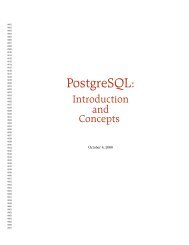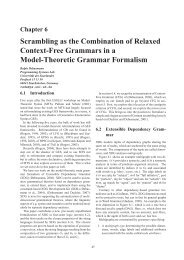The Use of Formal Language Theory in Studies of Artificial - CiteSeerX
The Use of Formal Language Theory in Studies of Artificial - CiteSeerX
The Use of Formal Language Theory in Studies of Artificial - CiteSeerX
You also want an ePaper? Increase the reach of your titles
YUMPU automatically turns print PDFs into web optimized ePapers that Google loves.
comb<strong>in</strong>ations—to occur together, to occur only if some other comb<strong>in</strong>ation <strong>of</strong>k-factors does not occur, etc.On the other hand, membership <strong>in</strong> an LT k str<strong>in</strong>gset depends only on theset <strong>of</strong> k-factors which occur <strong>in</strong> the str<strong>in</strong>g. Any mechanism which can dist<strong>in</strong>guishstr<strong>in</strong>gs on this basis is capable <strong>of</strong> recogniz<strong>in</strong>g (some) LT k str<strong>in</strong>gset.Conversely, any mechanism that can dist<strong>in</strong>guish members <strong>of</strong> a str<strong>in</strong>gset thatis LT k (but not SL) must be able to dist<strong>in</strong>guish str<strong>in</strong>gs on this basis. Cognitively,this corresponds to be<strong>in</strong>g sensitive to the set <strong>of</strong> all k-factors that occuranywhere <strong>in</strong> the <strong>in</strong>put. If the str<strong>in</strong>gs are presented sequentially, it amountsto be<strong>in</strong>g able to remember which k-factors have and which have not beenencountered <strong>in</strong> the stimulus.An example <strong>of</strong> a str<strong>in</strong>gset that is not LT is the set <strong>of</strong> str<strong>in</strong>gs over {A, B}<strong>in</strong> which exactly one B occurs:(5) One-B def = {w ∈ {A, B} ∗ | |w| B= 1}To see that this is not LT note that, for any k, A k BA k is <strong>in</strong> One-B whileA k BA k BA k is not. S<strong>in</strong>ce these have exactly the same set <strong>of</strong> k-factors, however,there is no k-expression that can dist<strong>in</strong>guish them.4.3 FO(+1) Def<strong>in</strong>able Str<strong>in</strong>gsets<strong>The</strong> next step <strong>in</strong> extend<strong>in</strong>g the complexity <strong>of</strong> the str<strong>in</strong>gsets we can dist<strong>in</strong>guishis to add the power to discrim<strong>in</strong>ate between str<strong>in</strong>gs on the basis <strong>of</strong> the specificpositions <strong>in</strong> which blocks <strong>of</strong> symbols occur rather than simply on the basis<strong>of</strong> blocks <strong>of</strong> symbols occurr<strong>in</strong>g somewhere <strong>in</strong> the str<strong>in</strong>g. Descriptions at thislevel are first-order logical sentences (formulae with no free variables) over arestricted str<strong>in</strong>g-oriented signature. Atomic formulae assert relationships betweenvariables (x, y, . . .) rang<strong>in</strong>g over positions <strong>in</strong> the str<strong>in</strong>g: x ⊳ y (mean<strong>in</strong>gthat y is the next position follow<strong>in</strong>g x), x ≈ y (x and y are the same position)and A(x), B(x), . . . (A occurs <strong>in</strong> position x, etc.). Larger formulae arebuilt from these us<strong>in</strong>g the logical connectives and existential (∃) and universal(∀) quantification. A str<strong>in</strong>g w satisfies an existential (sub)formula (∃x)[ϕ(x)](i.e., w |= (∃x)[ϕ(x)]) iff some assignment <strong>of</strong> a position for x makes it true.It satisfies a universal (sub)formula iff all such assignments make it true. <strong>The</strong>class <strong>of</strong> str<strong>in</strong>gsets def<strong>in</strong>able <strong>in</strong> this way is denoted FO(+1).As an example, One-B is FO(+1) def<strong>in</strong>able:(6) One-B = {w ∈ {A, B} ∗ | w |= (∃x)[B(x) ∧ (∀y)[B(y) → x ≈ y] ]},11


